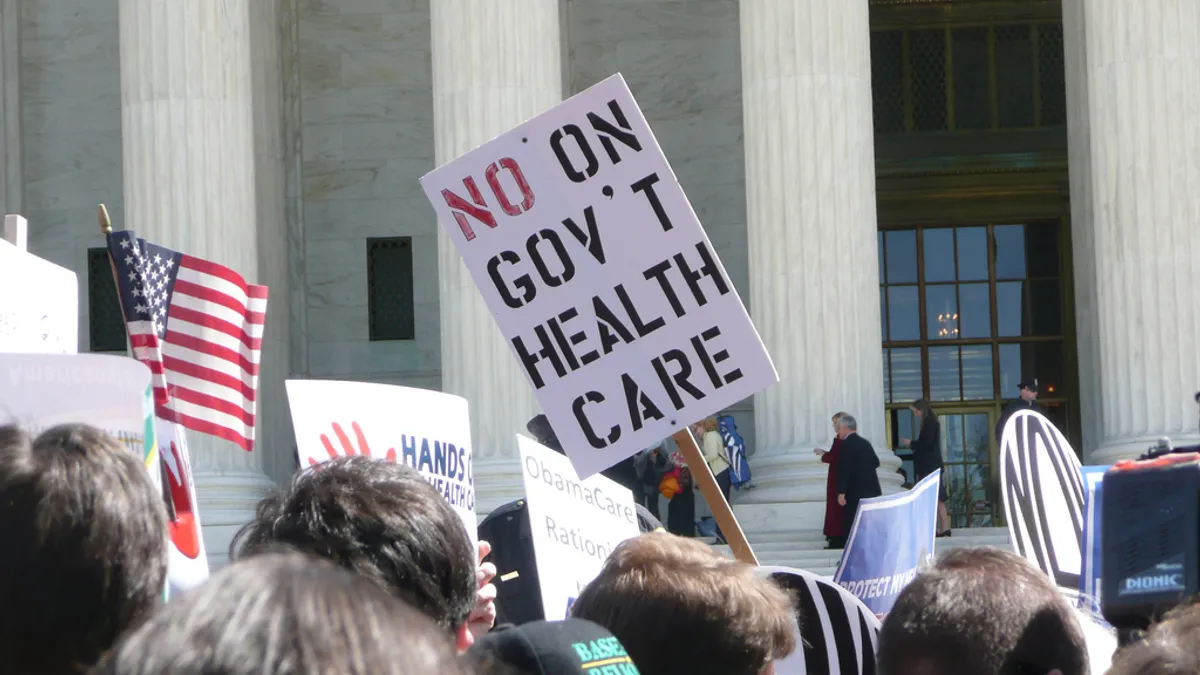The fate of the Affordable Care Act became more uncertain with the presidential win of Donald Trump and Republican lawmakers claiming victories in federal, state and local elections across the country.
The GOP tried but failed to repeal the ACA more than 62 times, by some estimates. Democrats have responded with proposals to tweak it, if necessary. And moderate supporters favor some type of amendment.
Any changes to the law won’t happen immediately. But employers can’t afford to sit by and wait it out. They still must comply with the law or face thousands of dollars in penalties for each employee.
Compliance in three stages
Employers with 50 or more full-time employees have three basic compliance responsibilities under the ACA’s Employer Shared Responsibility provisions:
Tracking. Employers must keep track of which employees could put them at risk for penalties because the employees either have no healthcare coverage, have inadequate coverage or their coverage isn’t affordable. Another phase of tracking is finding out which employees are full-time based on the IRS’s definition. Employers must track at least 12 months, in any period, of a worker’s time on the job. They also must identify which employees need coverage and which, based on their work hours, are nearing full-time status.
Coverage. Employers’ healthcare plans must value and be adequate and affordable based on the ACA’s standards. A complex calculation of data on employees’ pay and benefits information determines whether coverage is adequate and affordable.
Reporting. Employers must collect and analyze all relevant ACA data on employees and report all 1094 and 1095 forms to the IRS and 1095 B and 1095 C forms, if applicable, to employees.
Penalties for noncompliance
Employers with 50 or more full-time workers who don’t offer quality, affordable healthcare coverage by ACA standards to 95% of their employees, including independents, are violating the law.
Basically, for the 2016 tax year, employers that don’t offer their full-time workers healthcare coverage could pay $2,160 in penalties for every employee that works there, minus the first 30 employees. Employees who don’t offer their full-time employees affordable healthcare coverage could pay $3,160 in penalties for every employee who works there, minus the first 30 employees.
Based on estimates from the U.S. Congressional Budget Office, employers could be liable for a total of $31 billion in penalties for noncompliance.
The IRS levies its own penalties for noncompliance, including a $250 fee for every reporting document submitted late.
The critical challenges
David A. Reid, co-founder and CEO of EaseCentral, an HR and benefits SaaS platform, told HR Dive, “The IRS did not impose penalties on employers who could show they made a good-faith effort to comply with the information reporting requirements for 2015. The good-faith effort option is not offered for 2016 reporting.”
Without the “good-faith” rule, employers must be meticulously precise about collecting and reporting data or face a $200 penalty from the IRS for every document that’s inaccurate or submitted late. Reid added that the IRS’ 1094 and 1095 reporting system used to communicate whether rules are followed is complicated for employers to complete and involves translating data into a variety of pre-set codes and forms.
Newly hired employees can present another challenge for employers. Reid said new hires have different tracking measurements than veteran employees. And the IRS can designate them and other employees as full-time, whether they’re officially classified as such, creating another burden for administering benefits and accurately reporting how coverage was administered.
The technology difference
Systems for gathering, analyzing ad reporting data is helping employers meet compliance mandates. Platforms such as EaseCentral are cloud-based.
Reid says, “As employers determine how ACA requirements apply to them, including the employer mandate and reporting, they should use a benefits technology solution to track full-time status, eligibility, plan costs, and to make the offer of coverage to employees.”
EaseCentral uses data that’s either already tracked or can easily be added to the benefits enrollment and administration platform. This capability helps employers track employees’ eligibility status and complete the required IRS reporting under the ACA, said Reid.




















